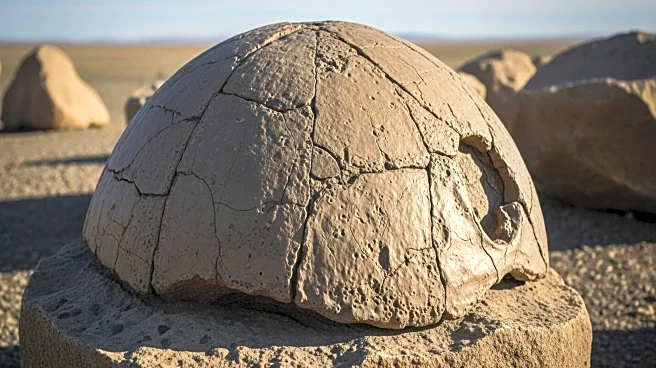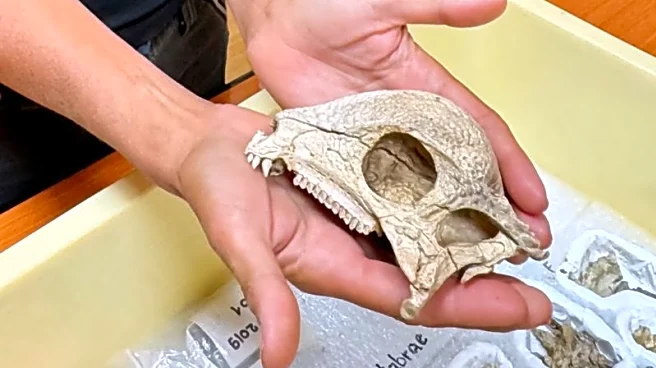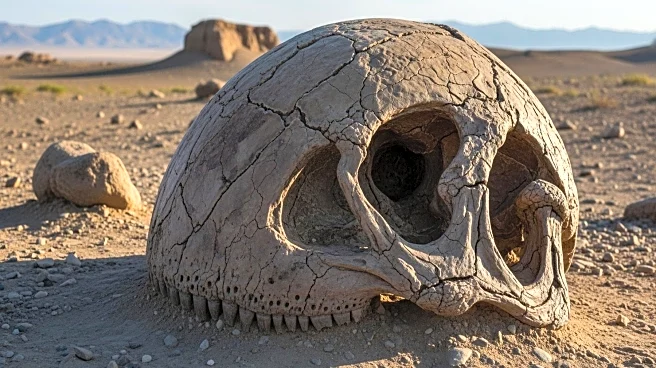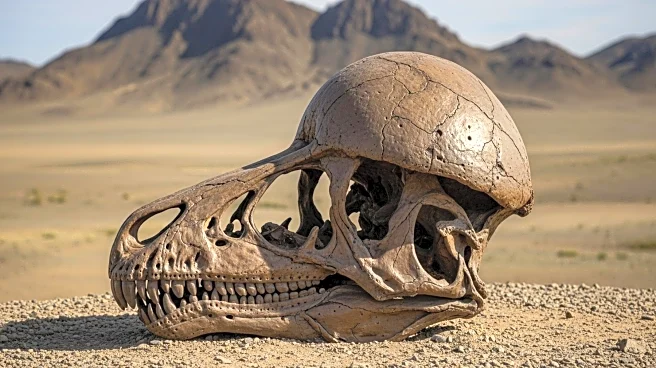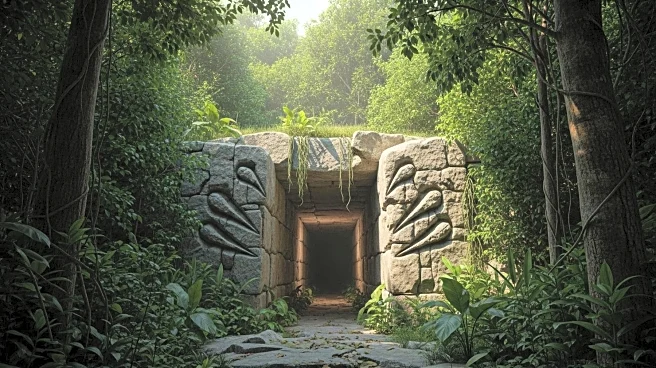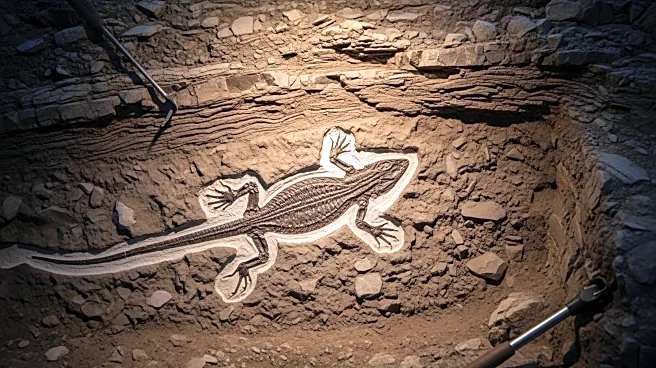What's Happening?
Paleontologists have unearthed the fossilized remains of a dome-headed dinosaur in Mongolia, dating back over 100 million years. This discovery provides new insights into the early evolution of the species' distinctive skulls. The fossil, found in the Gobi Desert, is believed to belong to a previously unknown species, offering a glimpse into the diversity and complexity of dinosaur life during the Cretaceous period. The dome-headed dinosaurs, known for their thick, bony skulls, are thought to have used these features for defense and possibly mating displays. This find adds to the understanding of how these unique anatomical features developed over time.
Why It's Important?
The discovery of the oldest dome-headed dinosaur is significant for paleontology and evolutionary biology, as it helps scientists understand the development of unique anatomical features in dinosaurs. This find could lead to a reevaluation of the evolutionary timeline and the ecological roles these dinosaurs played. It also highlights the rich paleontological potential of the Gobi Desert, which has been a site of numerous important dinosaur discoveries. The research may influence future studies on dinosaur behavior and adaptation, providing a broader understanding of prehistoric life and its evolution.

